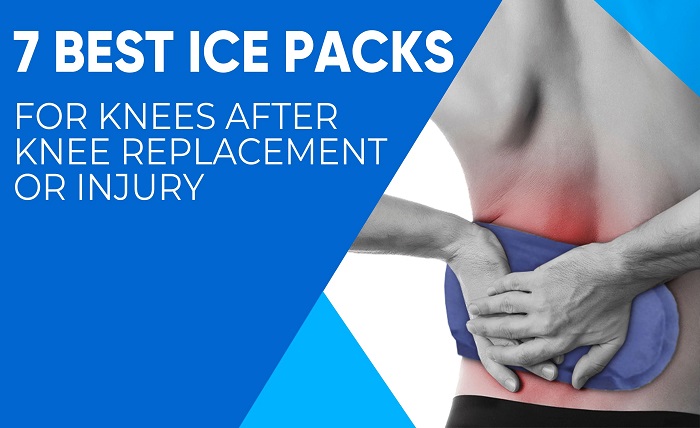How to Use Ice Packs for Knee Pain Relief

Knee pain is a common problem that can affect people of all ages and activity levels. It can be caused by various factors, such as injury, arthritis, overuse, or infection. One of the most effective and simple ways to relieve knee pain is to apply ice packs to the affected area. Ice packs can help reduce inflammation, swelling, and pain by constricting the blood vessels and slowing down the nerve activity in the knee. However, there are some tips and precautions to follow when using ice packs for knee pain relief. In this article, we will explain how to use ice packs for knee pain relief, what types of ice packs are available, and what are the benefits and risks of using them.
How to Use Ice Packs for Knee Pain Relief
The general rule for using ice packs for knee pain relief is to follow the RICE acronym: Rest, Ice, Compression, and Elevation. This means that you should:
- Rest your knee and avoid weight-bearing activities that may worsen your pain or cause further damage.
- Ice your knee for 10 to 15 minutes at a time, several times a day, or as directed by your doctor or physical therapist. You can use a commercial ice pack, a homemade ice pack, or a bag of frozen peas or corn. Make sure to wrap the ice pack in a towel or cloth to protect your skin from frostbite.
- Compression your knee with an elastic bandage or a brace to prevent swelling and provide support. Do not wrap it too tightly, as this may impair blood circulation and cause more pain.
- Elevation your knee above the level of your heart to reduce swelling and pain. You can use pillows, cushions, or a stool to prop up your leg.
You should use ice packs for knee pain relief as soon as possible after an injury or flare-up of arthritis. You should also use them after physical activity that may aggravate your knee pain, such as running, jumping, or climbing stairs. However, you should not use ice packs for more than 48 hours after an injury, unless advised by your doctor. After that, you may switch to heat therapy, which can help relax the muscles and improve blood flow to the knee.
What Types of Ice Packs Are Available
There are different types of ice packs that you can use for knee pain relief, depending on your preference, budget, and availability. Some of the most common types are:
- Commercial ice packs: These are ready-made products that you can buy from pharmacies, supermarkets, or online stores. They usually contain gel or liquid that freezes when stored in the freezer. They are flexible and can conform to the shape of your knee. They also come in different sizes and shapes, some of which are designed specifically for the knee. Some examples are CryoMAX 8 Hour Cold Therapy Pack, REVIX Shoulder Ice Pack, FlexiKold Oversize Gel Cold Pack, MagicGel Pain Relief Pack, and HurtSkurt Stretch-to-Fit Hot/Cold Pack.
- Homemade ice packs: These are DIY products that you can make at home using common household items. They are cheap and easy to make, but they may not last as long or be as effective as commercial ice packs. Some examples are:
- Ice cubes in a plastic bag: This is the simplest way to make an ice pack. You just need to fill a plastic bag with ice cubes and seal it tightly. You can also add some water to make it more flexible.
- Frozen sponge in a plastic bag: This is another easy way to make an ice pack. You just need to soak a sponge in water, squeeze out the excess water, put it in a plastic bag, and freeze it.
- Rice in a sock: This is a versatile way to make an ice pack that can also be used for heat therapy. You just need to fill a sock with uncooked rice, tie the end of the sock, and freeze it.
- Cold therapy systems: These are devices that use ice and water to provide continuous cold therapy to the knee. They usually consist of a cooler unit that holds the ice and water mixture, and a cuff that wraps around the knee and connects to the cooler unit with a tube. The cooler unit pumps the cold water through the tube into the cuff, which provides constant cooling and compression to the knee. These devices are more expensive and complex than other types of ice packs, but they may provide more effective and longer-lasting pain relief. They are often used by professional athletes or patients recovering from surgery. Some examples are Aircast Knee Cold Therapy Cryo/Cuff with Cold Therapy Cryo/Cuff Cooler Saver Pack and Aircast Knee Cold Therapy Cryo/Cuff with Automatic Cold Therapy IC Cooler Saver Pack.
What Are the Benefits and Risks of Using Ice Packs for Knee Pain Relief
Using ice packs for knee pain relief has many benefits, such as:
- Reducing inflammation and swelling in the knee, which can improve mobility and function.
- Numbing the pain receptors in the knee, which can provide temporary pain relief.
- Slowing down the metabolism and chemical reactions in the knee, which can prevent further tissue damage and speed up healing.
- Enhancing the effects of other treatments, such as medication, physical therapy, or exercise.
However, using ice packs for knee pain relief also has some risks, such as:
- Causing frostbite or skin damage if applied directly to the skin or for too long.
- Worsening the pain or stiffness if used incorrectly or excessively.
- Delaying the diagnosis or treatment of a serious underlying condition that may require medical attention.
- Interfering with blood circulation or nerve function if applied too tightly or over a large area.
Therefore, it is important to use ice packs for knee pain relief with caution and follow the instructions of your doctor or physical therapist. You should also monitor your skin condition and sensation while using ice packs, and stop using them if you experience any adverse effects, such as numbness, tingling, blisters, or increased pain.
Conclusion
Ice packs are a simple and effective way to relieve knee pain caused by injury, arthritis, or overuse. They can help reduce inflammation, swelling, and pain by constricting the blood vessels and slowing down the nerve activity in the knee. However, they should be used properly and safely to avoid potential complications. There are different types of ice packs that you can use for knee pain relief, depending on your preference, budget, and availability. You should also follow the RICE acronym (Rest, Ice, Compression, and Elevation) to optimize your recovery. If your knee pain persists or worsens despite using ice packs, you should consult your doctor or physical therapist for further evaluation and treatment.

